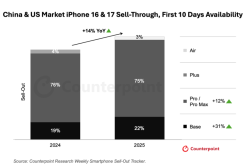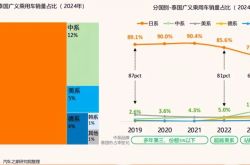China Unicom Secures License, Ushering Satellite Internet into a Fresh Era
![]() 09/09 2025
09/09 2025
![]() 625
625

On September 8th, China Unicom was granted an operating license for satellite mobile communication services.
According to reports, this is the first satellite internet license issued since the release of the 'Guidelines on Optimizing Business Access to Foster the Development of the Satellite Communication Industry'.
Guosen Securities has projected that China's satellite internet market is anticipated to reach nearly 100 billion yuan within the next five years. Meanwhile, Morgan Stanley forecasts that the global satellite internet market will exceed one trillion yuan by 2040.
Satellite internet provides a method of internet access with relatively low capacity. In the upcoming period, the deployment of satellite internet will pick up speed.
The competition in future mobile communication technologies has shifted from the terrestrial realm to the space domain.
Given that satellite internet is still in its early stages, upstream industries such as satellite manufacturing, satellite launching, ground equipment, and satellite operations are poised to be the first to reap the benefits.
In April 2021, China Satellite Network Group (referred to as 'Starnet Group') was officially established, marking the official entry of the 'national team' and indicating the acceleration of China's satellite internet industry.
Chengchang Technology, a subsidiary of H&T Intelligent Control, specializes in T/R microwave and millimeter-wave RF chips. It is one of the few private enterprises in China capable of undertaking large-scale national launch missions.
Due to extremely high industry barriers, besides Chengchang Technology, domestic enterprises that have mastered phased-array T/R chips include the 13th and 55th Research Institutes of China Electronics Technology Group Corporation, with annual shipments ranging from 1 to 1.5 billion chips.
The ratio of investment to output in the space industry is 1:10, and satellite internet has the potential to drive the downstream application market to reach trillions of yuan. Hence, there is immense potential in satellite applications and operational services.
Based on the accelerated implementation of the Beidou Navigation Satellite System industry, Navinfo's business covers the entire Beidou industry chain, encompassing upstream, midstream, and downstream sectors.
Additionally, companies under China Aerospace Science and Technology Corporation, such as China Satellite, which focuses on satellite manufacturing and applications, and China Satcom, which operates satellite space segments, will all benefit from the grand strategy of satellite internet.
Terahertz communication represents a transition from electronics to photonics, effectively addressing the growing scarcity of frequency band resources. It is regarded as a core communication technology for the 6G era.
From 5G to 6G, ultra-massive MIMO technology continues to advance. Ultra-massive smart antennas will find applications in high-speed scenarios like high-speed trains and airplanes, urban macro-coverage, precise positioning, and other fields, enabling seamless connectivity with full coverage.
Among these, intelligent reconfigurable surfaces (RIS) and electromagnetic wave angular momentum are two major research directions. RIS can make antennas more intelligent, enabling low-cost, low-power consumption, and large-scale deployment by reconstructing the propagation environment. Electromagnetic wave angular momentum can enhance spectrum efficiency without consuming additional spectrum or time.
The IMT-2030 (6G) Promotion Group under the Ministry of Industry and Information Technology has already commenced relevant technology research and development in collaboration with China Mobile, China Telecom, ZTE, Huawei, and others. Previously, ZTE worked with China Unicom to complete the industry's first technical test of an intelligent reconfigurable surface reflective panel in the 5G mid-band frequency.
However, the research and development of ultra-massive MIMO technology are still in the theoretical verification and experimental phases. Industrial implementation faces numerous uncertainties and has yet to make a significant contribution to the performance of relevant enterprises.
In contrast, satellite internet in the 6G industry is a prerequisite and foundation for industrial implementation. It has already entered an accelerated deployment phase and deserves more attention than terahertz communication and ultra-dimensional antennas.
Whenever a new generation of mobile communication commences commercial operations, research on the next generation has already begun. Standing at the current crossroads, the 6G era, with a market scale exceeding 10 trillion yuan, is rapidly approaching.
Disclaimer
The content related to listed companies in this article is based on the author's personal analysis and judgment, derived from information publicly disclosed by the listed companies in compliance with their legal obligations (including but not limited to interim announcements, periodic reports, and official interaction platforms). The information or opinions in this article do not constitute any investment or other business advice. Market Capitalization Observer does not assume any responsibility for any actions taken based on this article.
——END——








